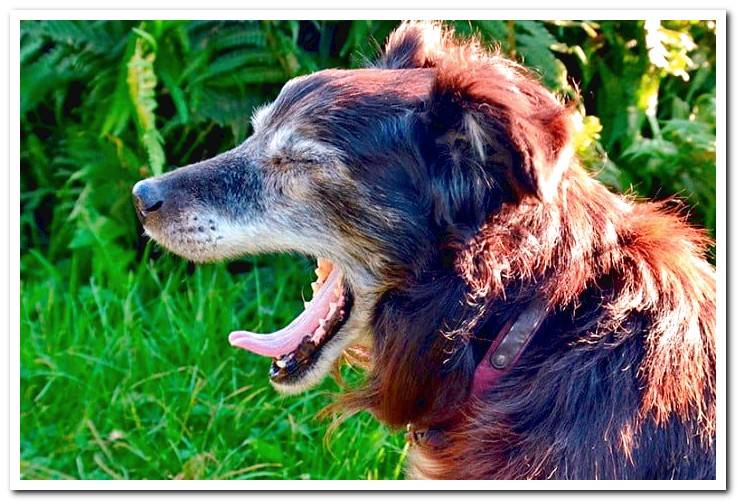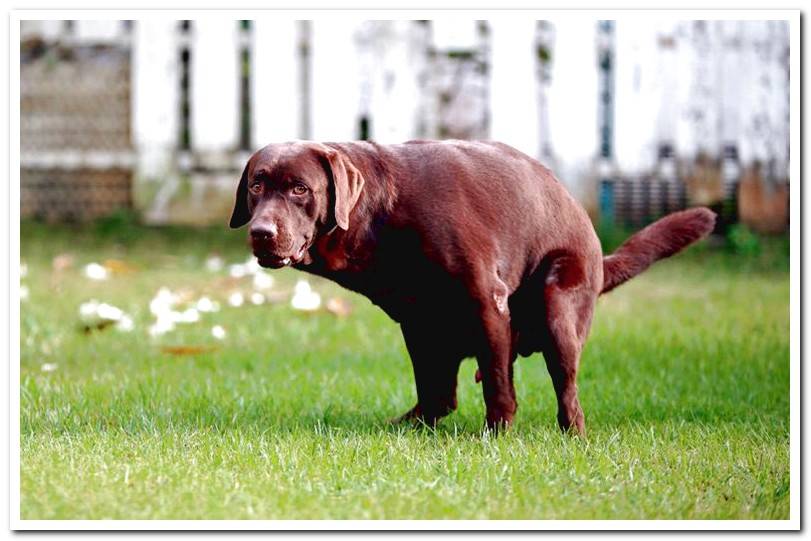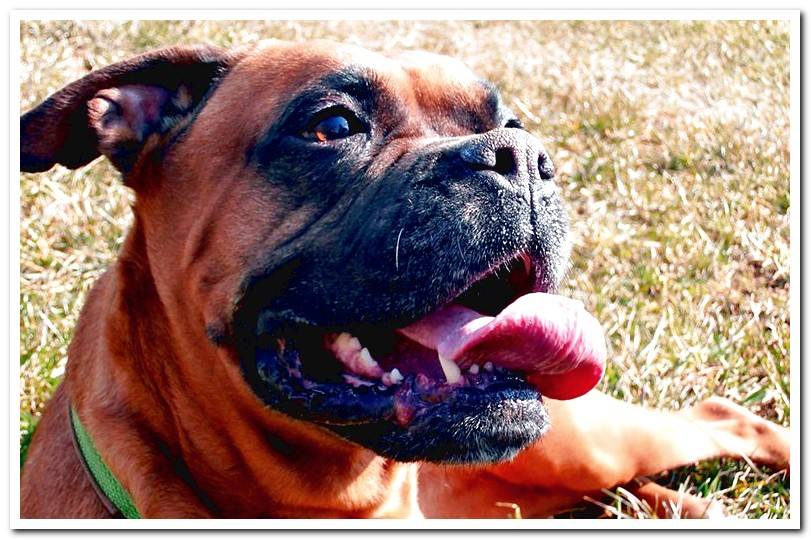
Perineal hernia is less frequent in dogs than other types of hernias such as umbilical or inguinal hernias. It is a protrusion in the anal area that can have very negative consequences on the dog’s health.
Any inflammation in this region, especially if our dog is old and whole, may indicate the presence of this type of hernia. It is reason for urgent veterinary consultation.
- You may also like: Inguinal hernia in dogs
Index of contents
- 1 What is a perineal hernia?
- 2 Perineal hernia symptoms in a dog
- 3 Which dogs have perineal hernias?
- 4 Can perineal hernia be prevented?
- 5 How are perineal hernias diagnosed?
- 6 Treatment for perineal hernia
- 7 Care for a dog with perineal hernia
What is a perineal hernia?
Perineal hernia is the protrusion that occurs throughout the anus. Due to its location, when the dog defecates, the hernia may grow. They can be uni or bilateral and also differ in their content, that is, what has been trapped inside the hernia.
It can be fat, liquids, the rectum, the prostate in males, the bladder or even part of the intestine. Gravity depends on this content. It can be deadly. Why a perineal hernia occurs is unknown, but it is believed that there may be hormonal involvement.
Other factors such as the growth of the prostate in males are also pointed out, which can increase efforts to evacuate feces. In general, any disease that affects the rectum can end up causing a hernia. The trigger is always an overstrain in the pelvic region.
Perineal hernia symptoms in a dog
What we will be able to notice with the naked eye in an inflammation or bulge in the anal area, on one side or both. If the flow of urine is disturbed as a result of the hernia, a very serious symptom is that this circulation is completely interrupted and the dog stops urinating. It is a veterinary emergency and you must go to the vet immediately.
Other clinical pictures of greater or lesser severity may appear depending on the organs that have become trapped in the hernia. Some of the symptoms that we can find are the following:
- Constipation.
- Straining when defecating.
- Urinary incontinence.
- Pain in the abdominal area.
- Changes in the normal position of the tail.

Which dogs have perineal hernias?
Although any dog could develop a perineal hernia, it has been observed that these are more common in older males that have not been sterilized. In fact, it is considered a typical hernia of these dogs. The highest incidence is between 7 and 10 years.
A higher propensity has been detected in breeds such as the Collie, the Boxer and or the Pekingese. These hernias are believed to be more common in males because the musculature of the perineal area in females is more powerful, since it is prepared to withstand childbirth.
Can perineal hernia be prevented?
As it is a type of hernia that presents whole and older dogs, we could think that the sterilization prevents its appearance. In fact, when a perineal hernia is diagnosed, the castration.
How are perineal hernias diagnosed?
If an inflammation in the anal area makes us suspect the presence of a perineal hernia, the veterinaryn can confirm the diagnosis by means of a rectal examination. To get it right you will probably need to sedate the dog.
Ultrasounds and x-rays are other tests that provide information. Blood and urine tests allow us to obtain data on the general condition of the dog. They are indispensable if it is necessary to operate.

Treatment for perineal hernia
The treatment of choice in these cases is surgery, but we must know that the resolution of these hernias is complex. Complications are likely to occur and, once repaired, the hernia will recur. In addition, in surgery it is usually necessary to reconstruct the entire area.
Various surgical techniques are used that include muscle grafts, which can cause rejection reactions, synthetic mesh, or both. Another problem is the age of the dog. In the elderly it may be impossible to operate, with which recourse is made to palliatives such as enemas, analgesia, diet, stool softeners or serum.
If the dog has suffered significant damage as a result of the hernia, such as the inability to urinate, it must always be stabilized before operating. Analgesics and antibiotics will be prescribed for the postoperative period.
Care for a dog with perineal hernia
For a dog with a perineal hernia that has undergone surgery, we must follow guidelines that try to minimize complications from an already complex surgery. It is important to consider these recommendations:
- Watch that the dog urinates and defecates correctly. Any effort should be reported to the vet, as it could spoil the intervention.
- Clean the incision daily.
- Feed him a diet rich in fiber to promote intestinal transit.
- Hydrate it, that is, check that it consumes enough water.
- Put a Elizabethan necklace if you intend to lick the area.
- Prevent him from exercising abruptly or any other effort.
